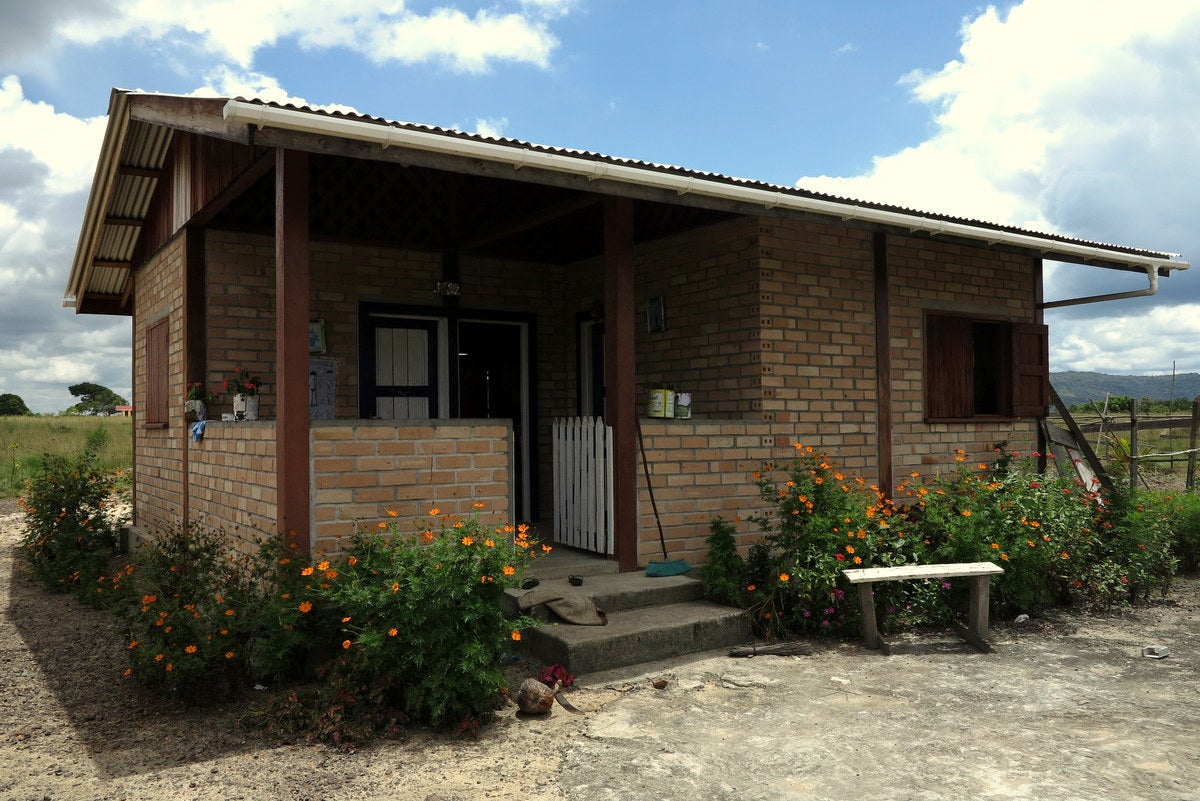Donald and Gloria are leaders of the Indigenous Community of Kwatamang, located in Region 9 of southeastern Guyana. It is not easy to get to Katwamang: first you have to take a 90 minute flight in a small plane from Georgetown, the country’s capital, and then you have a short (and a little bit bumpy) drive on rural roads, running through virgin rainforest.
Kwatamang, much like other communities of the Hinterland region, is also one of the poorest regions in Guyana. Around 10% of the Guyanese population lives in the Hinterland, where an estimated 78% of the population lives in poverty and approximately 74% of the inhabitants live in inadequate and crowded housing conditions. Furthermore, 60% of the population does not have safe access to drinking water.
For these reasons, Kwatamang was selected as one of the twelve beneficiary communities of the IDB’s Sustainable Housing for the Hinterland project. The project, which is being carried out by the Central Housing and Planning Authority (CH&PA), is focused on providing housing units, roof replacements and water tanks to Amerindian communities (such as the Makushi and Waspishana) in Regions 1 and 9.
But, how specifically does the project contribute to providing sustainable housing solutions?
-
- Community Participatory Design: Since the pilot phase, the communities have contributed to the housing design. For example, in Region 1, the house model is designed with a second story and is made of wood, in comparison to Region 9, where the houses are made of concrete.
- Short- and Long-Term Sanitation Solutions: In the short term, the houses will have latrines, a sanitation solution that stemmed from the participatory process carried out during the pilot phase, through Community Councils.
- Improved Access to Drinking Water: 80% of the selected communities did not have access to drinking water supply or storage system. The project will provide roofing solutions through rainwater storage tanks, as well as offer training to the beneficiaries on how to make the harvested water drinkable and how to test its quality.
- Minimal Environmental Damage and Footprint: Although the houses will be built with materials from the surrounding areas—especially in Region 1—in communities such as Whitewater, where the houses are made of wood, the impact on the environment and natural habitat is expected to be minimal since the houses will be built without altering the current footprint. Likewise, there are plans to work with the Community Councils to include solutions to potential vulnerability to natural disasters that may occur in the regions.
- Hiring Local Labor: One of the great advantages—and also challenges—of the program is that the contractors for the housing construction come from the same communities and work in a coordinated manner with the beneficiaries, which can in turn create knowledge and jobs in the communities.
The project is designed to cause minimal environmental pollution and to propose sanitation solutions in order to achieve long-term sustainability. Both these actions are in line with the Bank’s Operational Safeguards Policy.
The consultation processes are part of the same Policy and are especially relevant in this type of project where community participation is crucial, and where the operation is designed to improve the quality of life of indigenous communities, following the guidelines of the Operational Policy on Indigenous Peoples.


Leave a Reply